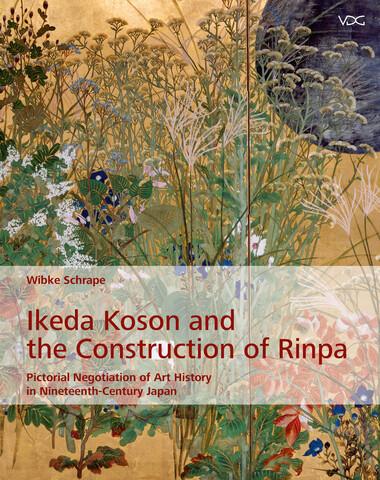Ikeda Koson and the Construction of Rinpa
Pictorial Negotiation of Art History in Nineteenth Century Japan
The painter Ikeda Koson (1803–1868) compiled woodblock-printed copybooks with compositions by his teacher Sakai Hōitsu (1761–1828) and his self-proclaimed predecessor Ogata Kōrin (1658–1716). He thus promoted himself as part of an artistic genealogy known today as Rinpa. Wibke Schrape’s study of Koson’s paintings and publications broadens the understanding of Rinpa as an artistic and art historical construct. Her application of actor-network-theory (ANT) as a methodical approach to Koson’s paintings challenges art-historical categories such as style and painting school by analyzing images as mediators in intertwined processes of artistic meaning and art historical knowledge production. Schrape thereby sheds light on the yet understudied painting production of the late Tokugawa period (1615–1868) and contributes to the reevaluation of the nineteenth century in Japanese art history.
